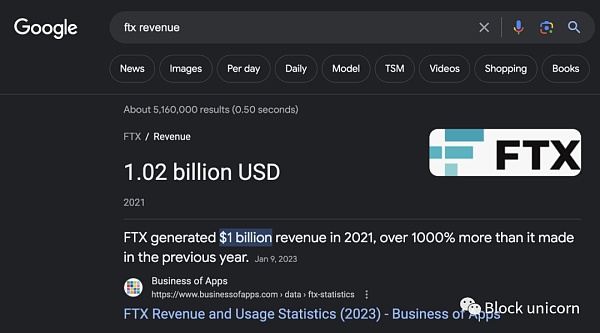2019 Encrypted Story Record: Reflections on the Hot Spots

As with any emerging industry, a key feature of the encryption industry is to be a storyteller. The story is both a way of understanding new phenomena, an attempt to self-realization, and a way for the community to view the world from a favorable perspective. In other words, the market story is marketing. However, this does not reduce the importance of the story, but rather helps us organize the story, and we don't make a fuss when one story is similar to another.
Below is a newsletter of the latest conversation. Everything has progressed, but tell us something interesting about the current encryption world.
1. The return of token sales
- Observation: Which business model will break out in the Web 3.0 era?
- Ethereum founder Vitalik Buterin proposes an easy-to-integrate anonymous transaction design
- Admission to Southeast Asian communities, Validators.Online officially joined the Wanchain Galaxy Consensus Node Ecology
The story of token sales continues, as does the encryption industry story. 2017 is the period of the Cambrian life explosion (a large number of ICO projects). Followed in 2018, I want to completely drain the value before the ICO fall. Since the second half of last year, token sales have basically stopped narrative, and even many hedge fund transformation strategies have begun to focus on equity investment.
Although some people predict that securitization token issuance (STO) is the next financing model. However, in addition to being able to change their resumes on LinkedIn, the market awareness has not improved.
Interestingly, after this, IEO began to explode. Binance first conducted IEO on his own platform. Simply put, IEO is the ICO that is directly carried out by the exchange that holds the token. On the one hand, after being executed by the exchange, it has more immediate liquidity. On the other hand, it is essentially central and is designed with the incentives of the exchange in mind.
In the turbulent encryption market, most people are very concerned about the results of the IEO. The BitTorrent token, which is backed by Tron and released in Binance, is divided into two sales, all sold out in 15 minutes. The second project, Fetch.ai, was sold out in 10 seconds. Subsequently, Hong Kong Token49 and The Block chief analyst Larry Cermack pointed out that IEO dominates, and all other exchanges are rushing to start IEO. Now, I don't know what the reason is, we are back to a world where everyone is competing for the vanity index of IEO sold out.
note:
Obviously, the reason for these short-term tokens is that there is still demand in the market, especially on a global scale. However, there is still doubt about whether each exchange can continue to develop after launching an IEO on its own platform. If (I think it is possible) more exchanges start IEO, IEO will slowly lose its effectiveness, and this trend and story will end before it has started. On the other hand, if IEO can continue to succeed, it could become an ICO replica.
2. Ethereum competition
As the first viable smart contract platform, Ethereum was once unique. This allows it to build a wall for the developer network. This has changed because of the large number of underlying competitors who have improved some aspects: throughput, scalability or governance, and often a large number of funds to motivate developers.
The new competition poses a huge challenge, and two factors make the challenge even more difficult. The first is slow project upgrades and improvements. For example, the last quarter of Constantinople hard fork delay; the current road map does not cover the Eth2.0 plan to go online in 2021 (this is more important).
The second factor is that for many people, competition comes not only from the outside but also from the inside. People began to talk frequently: interoperability blockchains (such as Polkadot with the community) are not competitors. In the past month, this has intensified the debate on Twitter and there may be more discussions.
note:
Arjun Balaji (an analyst and investor) said the Ethereum community is now experiencing a journey of heroes on the public chain (ie, the plot that has experienced a crisis and ultimately won). This means that Ethereum will inevitably evolve to the next stage of the blockchain. I agree with this statement. With new solutions emerging in the market, Ethereum will have to compete to attract developers, especially if financial risks and crypto assets are at high risk. What I am most interested in is whether Ethereum can regain the advantages of the developer community. Will Ethereum redouble its efforts or simplify it by adopting a separate agreement to find the best solution?
3. Who cares about governance?
As the agreement matures, more and more stakes are involved in decision making. Therefore, there is no doubt that governance has become one of the main stories of 2019.
The core question is whether the agreement should be formalized in the chain (or mixed governance) or a semi-formal, socially responsible, and exit-governing system (between Bitcoin and Ethereum). Just as Ethereum has a competitive challenge, new attendees will offer new products, and the community will inevitably ask if these things (systems, etc.) can better shape the agreement.
Interestingly, governance (especially chain governance) is anti-story, which is very bad in the current (voter participation) system. Recently, MakerDAO decided to significantly increase the cost of stabilization, a high risk of this decision, with less than 1% of Maker addresses actually participating in the vote. Similarly, the Aragon project recently voted on a proposal to spend about $6 million to promote protocol development, with only 0.3% of holders (only 60 of the 20,000 addresses) voting (accounting for the current supply of ANT). 9.3%).
note:
There are two reasons for fewer voters participating in governance. First, the voting process of most agreements is not clear, complicated, and the user experience is not good. Voting content usually involves technical issues, and it is difficult to make an informed decision without background knowledge.
At the same time, the agreement will become a form of encryption and rule, and only those who have the most stake will pay close attention to the decision-making results and promote decision-making. At Tezos, users voted for a few bakers, with the first vote accounting for 82.44% of the total.
Coinbase recently announced that it will support Tezos staking and MakerDao governance through Custody (product). A key question of governance is whether improving the voting experience can increase participation. Another question is how market sentiment will evolve when using a system that represents voting. Is this system repeating the existing centralized system in a capital-controlled manner, or is it possible to find a balance between decentralization and efficiency?
4. Fair issuance and development incentives
The most exciting thing in the first quarter was that Grin implemented the MimbleWimble protocol. Because many people are interested in anonymous coins, the anonymous team has a mystery and of course has a love for Harry Potter.
However, it is undeniable that the risk of mining based on venture capital (about tens of millions of dollars) guarantees "fair release." Unlike other tokens, Grin did not pre-mining and private placement before the main online line and the official mining. In other words, if you are a venture capitalist and you are the first to engage in mining, then your "price" is the best. The purpose of the founding team is not only to obtain monetary benefits, but to simplify the way to build global open blockchain agreements and cryptocurrencies.
A few weeks after the release, project founder Ignotus Peverell (anonymous) expressed frustration to the community and condemned the development of the matter. He regrets that mining has generated huge commercial benefits, but the development projects led by Yeastplume are not able to get $50,000 through crowdfunding activities, so they cannot be fully developed in the next six months.
This has led to a renewed discussion about development incentives, which have been a disruptive factor in encryption protocols. On the one hand, people want a pure economic model that does not put developers first. On the other hand, they want the agreement to work flawlessly.
Since OSS, there have been problems with open source software development incentives. However, when software is the foundation of digital currency, the more bonuses, the more serious the problem.
note:
After Grin, the story about fair release was outdated. In this case, Grin opened up a story space for the project to engage in radical discussions and clarify the reasons for providing some kind of incentive model for developers and other members of the market network, such as Zcash's founder award. As the new agreement goes live, focus on whether it will be acceptable to the development team and in exchange for a new specification for building maintainable open protocols.
5. The boundary between the integrated fund and the public and private markets is blurred
Not only did ICO appear in 2017, but there were also hundreds of new hedge funds, all focused on digital assets. Even at the peak, many people understand that it is impossible to continue market segmentation on a large scale. After the emergence of the bear market in 2018, fund withdrawals may be made private, because the lock-up period is over and investors can withdraw their money.
At present, when the highest allocators have their own talents and skills and merge into one market (the market cannot be integrated with traditional categories), the fund is not about withdrawals, but about emerging trends in new cooperation and integration. For example, Arrington Capital recently acquired ByteSize, an Australian fund company. ByteSize has a suite of patented data software that provides a more aggressive investment strategy. Morgan Creek Digital, a product developed by Morgan Creek after the acquisition of Full Tilt Capital, announced that it will become a major investor in Ikigai Asset Management, a merger equity and initiative management fund created by Former 72 manager Travis Kling.
The background to this trend is the growing recognition that encryption blurs the distinction between public and private market strategies. People have already felt the limitations of traditional methods when investing, and are looking for new ways to combine investment methods. A typical example: Andreessen Horowitz (Private Venture Capital) decided to require all employees to be converted into qualified financial advisors.
note:
This seems to be an inevitable trend. In an industry that includes all types of assets (including underlying public chain agreement tokens, private equity sales, passive income through staking), adherence to a strategy can be a disadvantage (considered to be… In the context of the cycle, it is basically a disadvantage.) When you pay close attention to the distributors, you must not only focus on the diversification strategy, but also collaborate in new ways.
Source (translation): first class warehouse https://first.vip/shareNews?id=1573&uid=1
We will continue to update Blocking; if you have any questions or suggestions, please contact us!
Was this article helpful?
93 out of 132 found this helpful
Related articles
- The meaning of a representative behind Huawei and the enlightenment given to the blockchain
- Sino-US trade frictions are further escalated, can cryptocurrencies promote the cross-border payment revolution in international trade?
- Market analysis: bulls forcibly supported, BTC came to key resistance
- Let digital currency enter everyday life, US telecommunications giant AT&T accepts bitcoin payments
- Zhao Changpeng: Why did I sue Sequoia?
- After the first inquiry, Shenzhen Datong was investigated and found that the blockchain technology investment in the first quarter was less than 200,000 yuan.
- Wanchain Galaxy Consensus Exploration 03 – Blocker Selection Algorithm






